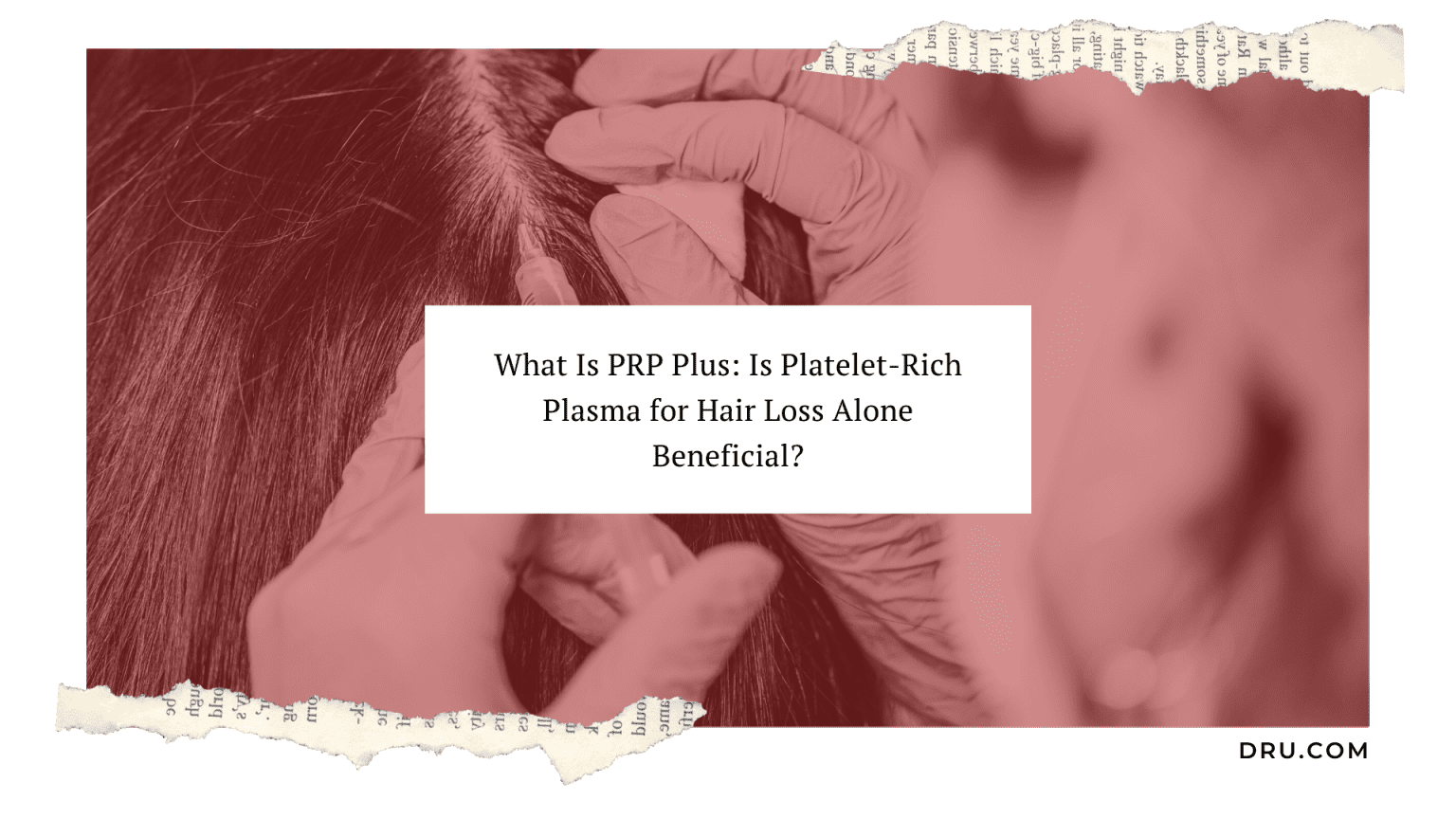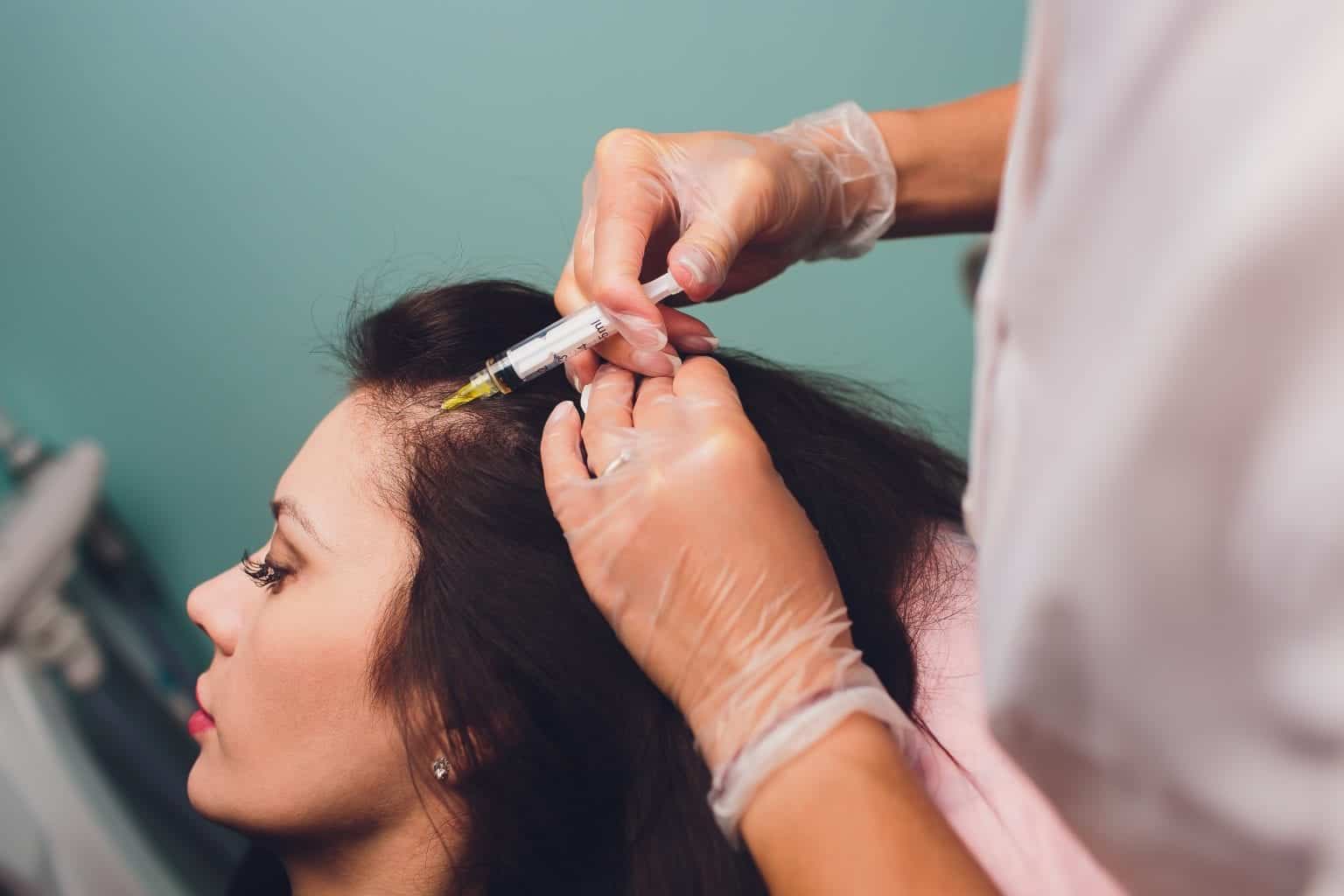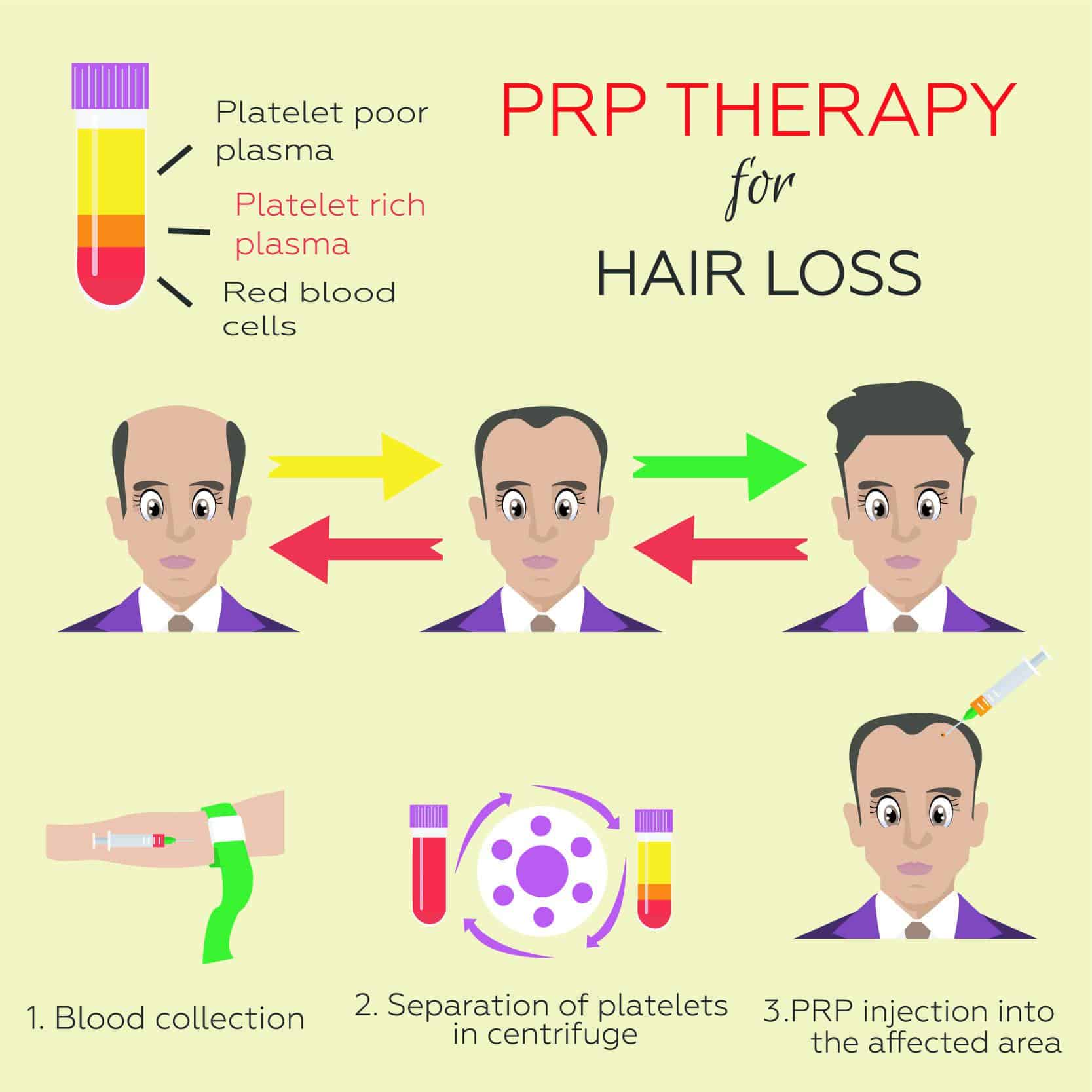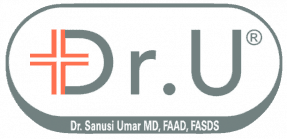What Is PRP Plus: Is Platelet Rich Plasma for Hair Loss Alone Beneficial: Platelet-rich plasma entails the processing of blood to concentrate and isolate platelet concentrates along with the platelet-derived factors contained. This is typically applied topically or by injection to tissue sites where certain beneficial effects are expected. The beneficial effects desired vary from regenerative, to healing effects. In the context of hair, the expectation is that the growth factors it contains could stimulate hair growth.

In this article we would take on the following questions:
- What is the role of platelet-rich plasma in hair loss treatment?
- What is the process of Using platelet-rich plasma for hair loss?
- What are the side effects of using platelet-rich plasma for hair loss treatment?
- Is platelet-rich plasma for hair loss effective?
And lastly, you might be asking: Are platelet-rich plasma (PRP) treatments alone enough to stimulate hair growth for the long-term?
What is the role of platelet-rich plasma – PRP in hair loss treatment?
Platelet-rich plasma has been used to chance healing in a variety of body areas. For this reason, PRP is in popular use in sports medicine where it is used to enhance the healing of sports injuries. The same factors that cause wound healing enhancement have been postulated to enhance hair growth and for that reason, it is being used by physicians for the treatment of hair loss such as that caused by androgenetic alopecia also called male pattern baldness in men. There are studies that suggest that it has the potential of causing hair growth.
In order to grasp how PRP works, it’s essential to acknowledge the significance of platelets in the healing process. Blood is composed of platelets in addition to red and white blood cells. After a person incurs an open cut or wound, the platelets work to put a stop to the bleeding and advance the healing process. Studies have shown that applying platelets concentrates on wounds can cause healing to go faster. This beneficial effect has been attributed to the presence of growth factors within the platelets.
Growth factors are proteins that act as messengers that tell skin cells to function. Various growth factors have been shown in studies to promote hair growth. In addition to growth factors, there are other molecules such as cytokines and chemokines. A 2016 study found that the following cytokines, chemokines and growth factors (1) may be found within PRP:
- IL-1b
- IL-1ra
- IL-4
- IL-6
- IL-8
- IL-12
- IL-13
- IL-17
- INF-γ
- TNF-α
- MCP-1
- MIP-1a
- RANTES
- bFGF
- PDGF
- VEGF
- IL-2
- IL-5
- IL-7
- IL-9
- IL-10
- IL-15
- G-CSF
- GM-CSF
- Eotaxin
- CXCL10 chemokine (IP-10)
- MIP 1b
- TGF-Beta
- IGF-1

What is the process of Using platelet-rich plasma for hair loss?
Using PRP for hair loss entails five basic essential steps:
- First, the doctor takes blood from a vein in the arm.
- Next, they put the blood sample in a centrifuge. the centrifuge takes the components of the blood apart.
- Next, the doctor extracts the platelets with a syringe
- Next, the area to be injected is numbed using local anesthetics
- Finally, the PRP is injecting them into specific areas of the scalp.
The process could be varied by other sub-steps depending on your provider preferences. These include processes for activating PRP; the mixing of the PRP with various enhancing media, e.g hyaluronic acid. The process will typically take 60-90 minutes to complete. Typically, the patient can resume their day-to-day schedule without restrictions. An ideal regimen consists of three monthly treatments followed by a treatment every six months.

What are the effects of platelet-rich plasma for hair loss ?
Since the treatment requires injecting your own blood soon after extraction, the chances of complications and side effects are minimized. However, any treatment that consists of injections always comes with a risk of side effects. These risks can include injury to the blood vessels causing bruising or nerves, infection, calcification at the injection points, and scar tissue. Furthermore, patients could have a negative reaction to any local anesthetic used during treatment.
Is platelet-rich plasma for hair loss effective?
Research on PRP as a treatment for hair loss has recently been reviewed by researchers. In 2019, researchers for the journal Aesthetic Plastic Surgery found that PRP injections reduced hair loss (2) and increased the diameter of hairs and density of hair growth. Despite this fact, the researchers recognized that the original study’s small sample size of 262 patients with androgenetic alopecia put a limit on their investigation.
In a 2019 Dermatologic Surgery Journal publication, a review of literature looked at 19 articles and a total of 389 patients found that in the overall, PRP treatments was beneficial in causing hair regrowth (3) in patients with androgenetic alopecia and alopecia areata. However, another publication in the International Journal of Women’s Dermatology that reviewed literature deemed PRP as a “promising” treatment for hair loss (4) based on what they found. However, the team did mention that since different researchers and clinics can use different preparations, session intervals, and injection techniques to conduct PRP, effectiveness can vary. Given the conflicting findings of these studies, it can be concluded that at this time, standard PRP’s effectiveness is inconsistent.
Why is PRP an inconsistent stimulator of hair growth?
As mentioned previously, PRP works by releasing growth factors that stimulate hair growth. According to Dr. Umar, who is head of hair and scalp disorders at the department of Dermatology Harbor UCLA division of medicine, a myriad of cytokines, chemokines, and growth factors are produced by PRP. According to Dr. U, some factors produced by PRP will stimulate hair growth. Hair growth promoters in PRP include:
However, several factors produced in PRP will inhibit hair growth. These include:
- TGF Beta (11)
- IL-6 (12)
- TNF – alpha (13)
- IL-1 (14, 15)
Thus PRP is only successful in growing hair only if the growth-enhancing PRP factors dominate the hair inhibiting factors from PRP. If the opposite occurs, the net effect may, in fact, be loss of hair. If they are at par a stalemate will be the case.
PRP Plus by Dr. U as a More Effective Approach
With this in mind, Dr. U incorporates measures into his treatment process that inhibit TGF Beta and IL6. By doing so he favors the former group by suppressing the latter group, therefore resulting in a higher chance of success. This approach is called PRP Plus. To inhibit TGF Beta and IL6, Dr. U uses topical agents such as Dr. UGro™ Gashee botanical products as well as oral Gashee hair vitamins all of which contain ingredients that can do this.
If You are considering PRP and have questions, Ask Dr. Umar!
